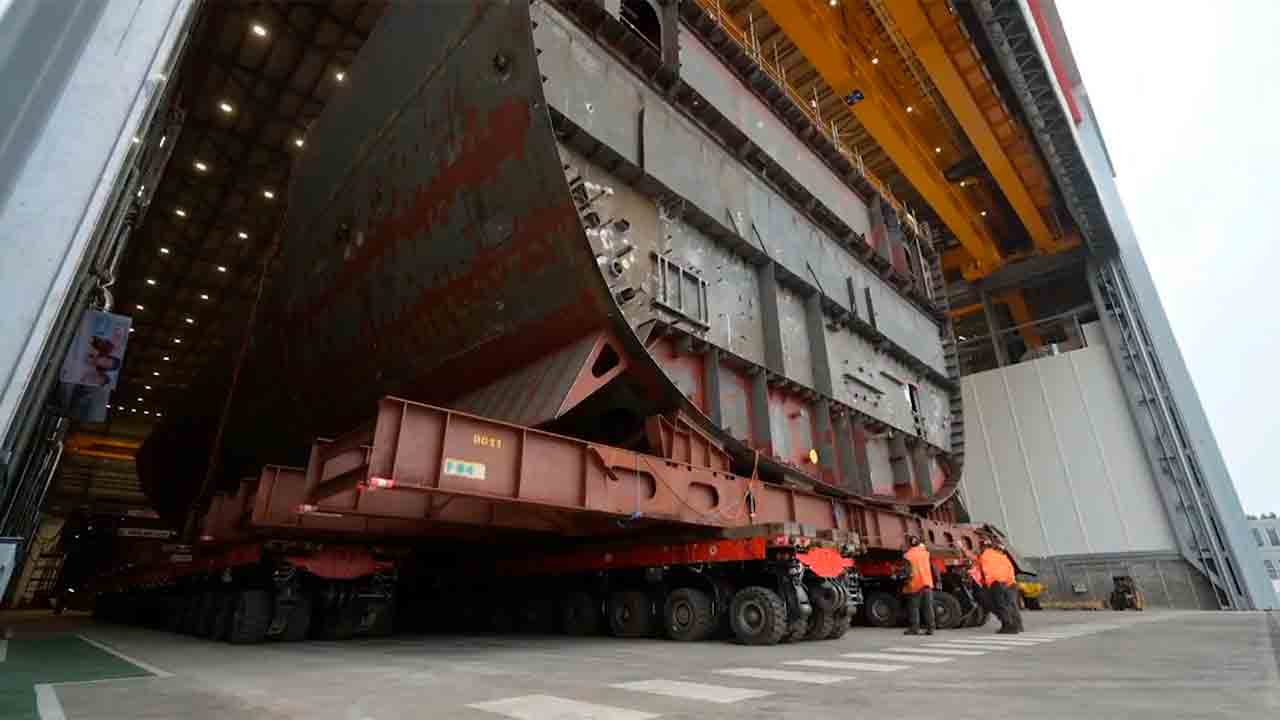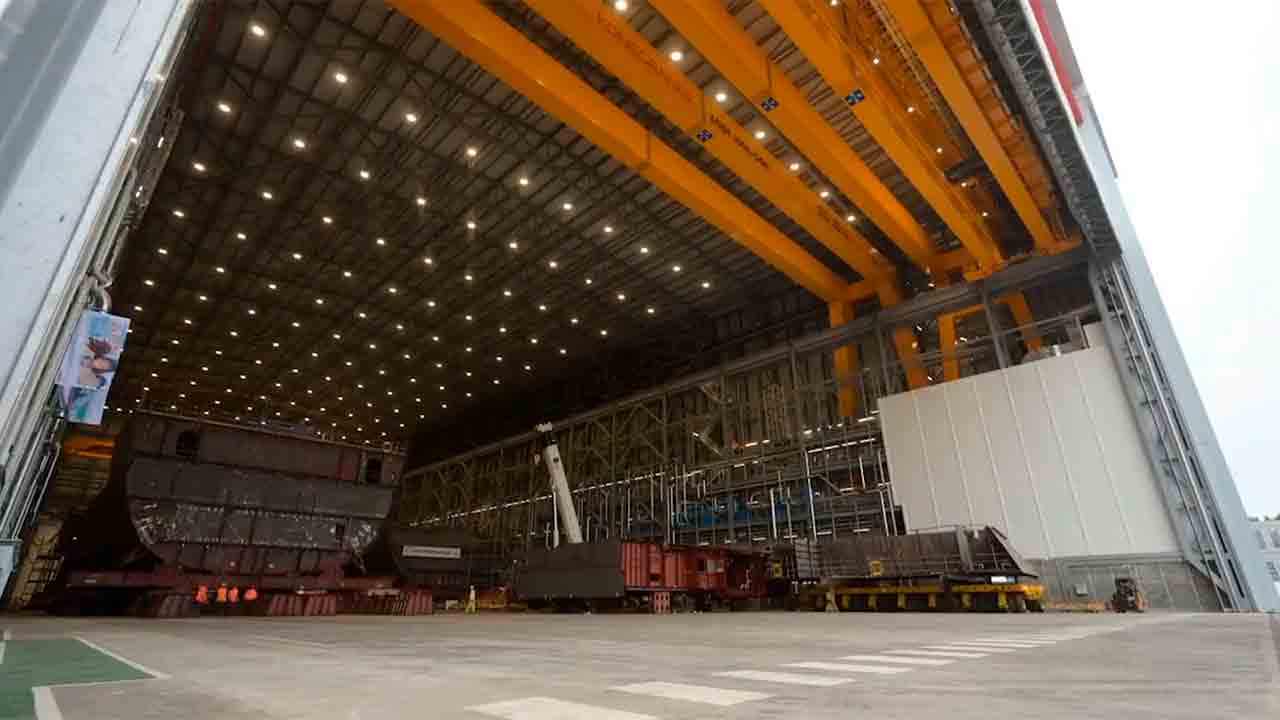The video released this week shows the rear block of the Royal Navy’s third Type 26 City-class frigate, HMS Belfast, being transported, showing important progress in the construction of the ship.
The work was carried out at the newly built Janet Harvey Hall at BAE Systems’ Govan Shipyard in Glasgow.
+ Click here to watch the video
This is the first time that a Type 26 frigate is fully assembled indoors, allowing for efficient production schedules while avoiding weather delays. The bow section is also scheduled to be delivered to the facility in the next few weeks.
+ Helibras receives $185 million investment to produce H145 in Brazil
Once the hull structure is complete, further equipment assembly and system integration processes will continue. The ship is then launched and transferred through the Clyde River to the Scottstown Shipyard (also operated by BAE Systems), and is officially commissioned after final testing.
In an official statement, BAE Systems described the transport as “an important step in planning,” and said it aims to provide the Royal Navy with the most advanced anti-submarine capabilities to date.
The Type 26 programme is considered a national strategic project involving more than 120 suppliers in the UK, with each ship scheduled for a minimum of 25 years of operation and expected to remain active until the 2060s.

Main Systems for Type 26:
- Sea Ceptor Anti-Air Defense System
- 127mm (5 inch) Medium Caliber Navy Cannon
- Artisan 997 Radar
- Next-generation sonar system
- Vertical launch systems (VLS) for various missiles
The Type 26 frigate is designed to provide flexible and highly lethal capabilities in underwater combat environments and is adapted to global marine missions that can accommodate multiple operational profiles. The latest digital modeling and modular block construction methods improve assembly accuracy and reduce risk.
In addition to the UK, Australia and Canada also employ this Type 26 design as the basis for their own fleet renewal plans, making it a multinational project with a total of 29 vessels planned for the three countries.

Source/Image: BAE Systems Maritime | UKDefencejournal. This content was created with the cooperation of AI and was confirmed by the editorial department.

